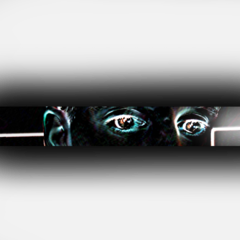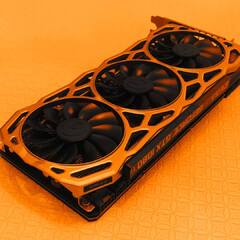-
Posts
2,765 -
Joined
-
Last visited
Reputation Activity
-
 The Flying Sloth got a reaction from Psittac in samson q2u buzzing when keyboard led is on
The Flying Sloth got a reaction from Psittac in samson q2u buzzing when keyboard led is on
Change the Q2U to a different USB port, ideally a different circuit/controller
-
 The Flying Sloth got a reaction from NinJake in Audio feels like it's always left speaker "heavy"
The Flying Sloth got a reaction from NinJake in Audio feels like it's always left speaker "heavy"
Simple problems have simple solutions, in your windows audio settings you can rebalance so that the right is louder
-
 The Flying Sloth got a reaction from Psittac in Audio feels like it's always left speaker "heavy"
The Flying Sloth got a reaction from Psittac in Audio feels like it's always left speaker "heavy"
Simple problems have simple solutions, in your windows audio settings you can rebalance so that the right is louder
-
 The Flying Sloth got a reaction from ROGreg in How to know what voltage a sound card is able to supply to the microphone?
The Flying Sloth got a reaction from ROGreg in How to know what voltage a sound card is able to supply to the microphone?
Since it's an electret condenser and a poor one at that so it really doesn't need Phantom power, though it certainly does sound marginally less shite with it.
Now OP, there's nothing wrong with Electret mics and to call them fake is overstepping more than a little, some very expensive, great sounding mics are electret but the point is that it's much cheaper to make a functional (read as barely working) electret mic than a true pressure gradient condenser microphone. I'd highly suggest you have a read of the link in my signature for further information.
Oh, and OP, cheapest interface is the Behringer UM2.
-
 The Flying Sloth got a reaction from Bombastinator in Service manual for Yamaha EMX 5 Power Mixer
The Flying Sloth got a reaction from Bombastinator in Service manual for Yamaha EMX 5 Power Mixer
I've found a service manual for the EMX5000 and the EMX512 but nothing for the EMX5,
I doubt you'll be able to find a repair manual for that but the user manual does have some good tips in it as well as a signal path diagram that could be helpful for troubleshooting.
I'm not sure that dust should be causing an issue like this but it is very easy to check, open it up, blow the dust out and see if it's fixed.
While you're in there keep an eye out for anything that looks broken or burnt and you may get a better idea of the issue. Best of luck !!
-
 The Flying Sloth got a reaction from OfficialTechSpace in Best USB mic??
The Flying Sloth got a reaction from OfficialTechSpace in Best USB mic??
Jesus this devolved quickly,
OP, it is very difficult to get a USB mic that is also workable for singing and / or other recording applications, your best bet will be something like a Samson Q2U, AT2005 or Tbone MB88U all of which are combination XLR / USB microphones built by brands with recognition in the studio audio space. Because of this USB/XLR design they also come with the added benefit of not becoming paperweights when something in the USB / conversion circuit breaks. Take a look at the guide in my signature for a little more information on microphone options, the guide is designed to answer the question you have posed.
Now to lend my 2 cents to the dumpster fire
I would argue that they are a simplest option in that you just plug in the microphone and it works. I'm exaggerating the difficulty difference but think of it like this, most people know full well that it's possible to build a computer, buying parts and putting it together yourself yet people still buy prebuilts every day because they either have no interest in learning to build or they think it's too difficult for them. Don't get me wrong, I have an absolute hatred of USB microphones but they're like a prebuilt, you plug it in and it works, if it doesn't you RMA and get a replacement, it is much simpler but by the same token a prebuilt PC is almost never going to be the best value for money or have the perfect specs for streaming or your specific workload, it's a generic solution that does the basics good enough for people to buy it.
I am not aware of any USB microphone with an amplification circuit or DAC / ADC anywhere close to even the most budget of audio interfaces, if we're talking microphones you have more of a point, there are the BM800 and other crap Ebay special microphones that are genuinely terrible but that doesn't mean all budget solutions are bad, take the Behringer C2 for instance, I've used them as daily driver microphones for years despite owning mics woth well over 50x as much. The argument isn't that the budget XLR solution is better by virtue of being XLR, the budget XLR solution is better because it gives you options for improvement, likely ASIO support, good DAC and ADC, 24 bit audio vs the 16 (at best) bit audio of a USB mic, a better amplification circuit and complete modularity in that if/when something breaks you can sub out that one component rather than buying a whole new USB mic.
I know I'm just being pedantic here but most budget interfaces are bus powered so it really is only one more cable
The additional latency from a longer USB cable is negligible and likely could only be measured with lab equipment. There's a decent thread with some calculations here and one from Gearspace with people talking specifically about USB latency and cable length to interfaces here. This is even less of an issue with a mic cable sending an analogue signal, there are many more things to be worried about when lengthening a cable such as resistance, possible EMI, possibility of breakages all of which I would be more concerned about than the latency of the analogue microphone signal. Take a look at the wikipedia page about Velocity Factor (the speed at which a signal can pass through a wire to see why I'm not worried.
There are certainly cheap USB Audio Interfaces with terrible drivers, like the Behringer UM2 and UMC22 or M Audio Fast Track series (there are others but those were the ones I knew off the top of my head). Most of the time these driver issues are due to the interfaces being budget devices at launch and being older designs considered legacy by their manufacturer and as such receive little in the way of support with newer operating systems. Now, these driver issues are usually noticed because people expect a USB interface to have native ASIO drivers and play nice with their DAW or other softwares they may utilise the interface with, most of the time even the most broken of interface drivers still allow it to be used with Native windows drivers as a simple external IO option though you will lose a large amount of functionality.
It goes similarly for USB microphones with one small adjustment, because they were never designed for low latency use in an audio production environment a USB microphone with dodgey drivers or something broken in the ADC circuit makes it unusable as opposed to a legacy interface where it just becomes a glorified USB audio adapter. Because of their low price and relative lack of expectation of performance USB mics (especially generic options) often can be running from the same standard inbuilt Windows USB audio drivers that a legacy interface would, using the inbuilt windows drivers should lessen the possibility of massive failure on the software side but still leaves the hardware side where I think it is fairly obvious a USB mic would die well before an interface would
In closing I'll relay a quote from another of the Audio forum regulars, Derkoli
Regards,
Sloth
-
 The Flying Sloth got a reaction from LogicalDrm in Best USB mic??
The Flying Sloth got a reaction from LogicalDrm in Best USB mic??
Jesus this devolved quickly,
OP, it is very difficult to get a USB mic that is also workable for singing and / or other recording applications, your best bet will be something like a Samson Q2U, AT2005 or Tbone MB88U all of which are combination XLR / USB microphones built by brands with recognition in the studio audio space. Because of this USB/XLR design they also come with the added benefit of not becoming paperweights when something in the USB / conversion circuit breaks. Take a look at the guide in my signature for a little more information on microphone options, the guide is designed to answer the question you have posed.
Now to lend my 2 cents to the dumpster fire
I would argue that they are a simplest option in that you just plug in the microphone and it works. I'm exaggerating the difficulty difference but think of it like this, most people know full well that it's possible to build a computer, buying parts and putting it together yourself yet people still buy prebuilts every day because they either have no interest in learning to build or they think it's too difficult for them. Don't get me wrong, I have an absolute hatred of USB microphones but they're like a prebuilt, you plug it in and it works, if it doesn't you RMA and get a replacement, it is much simpler but by the same token a prebuilt PC is almost never going to be the best value for money or have the perfect specs for streaming or your specific workload, it's a generic solution that does the basics good enough for people to buy it.
I am not aware of any USB microphone with an amplification circuit or DAC / ADC anywhere close to even the most budget of audio interfaces, if we're talking microphones you have more of a point, there are the BM800 and other crap Ebay special microphones that are genuinely terrible but that doesn't mean all budget solutions are bad, take the Behringer C2 for instance, I've used them as daily driver microphones for years despite owning mics woth well over 50x as much. The argument isn't that the budget XLR solution is better by virtue of being XLR, the budget XLR solution is better because it gives you options for improvement, likely ASIO support, good DAC and ADC, 24 bit audio vs the 16 (at best) bit audio of a USB mic, a better amplification circuit and complete modularity in that if/when something breaks you can sub out that one component rather than buying a whole new USB mic.
I know I'm just being pedantic here but most budget interfaces are bus powered so it really is only one more cable
The additional latency from a longer USB cable is negligible and likely could only be measured with lab equipment. There's a decent thread with some calculations here and one from Gearspace with people talking specifically about USB latency and cable length to interfaces here. This is even less of an issue with a mic cable sending an analogue signal, there are many more things to be worried about when lengthening a cable such as resistance, possible EMI, possibility of breakages all of which I would be more concerned about than the latency of the analogue microphone signal. Take a look at the wikipedia page about Velocity Factor (the speed at which a signal can pass through a wire to see why I'm not worried.
There are certainly cheap USB Audio Interfaces with terrible drivers, like the Behringer UM2 and UMC22 or M Audio Fast Track series (there are others but those were the ones I knew off the top of my head). Most of the time these driver issues are due to the interfaces being budget devices at launch and being older designs considered legacy by their manufacturer and as such receive little in the way of support with newer operating systems. Now, these driver issues are usually noticed because people expect a USB interface to have native ASIO drivers and play nice with their DAW or other softwares they may utilise the interface with, most of the time even the most broken of interface drivers still allow it to be used with Native windows drivers as a simple external IO option though you will lose a large amount of functionality.
It goes similarly for USB microphones with one small adjustment, because they were never designed for low latency use in an audio production environment a USB microphone with dodgey drivers or something broken in the ADC circuit makes it unusable as opposed to a legacy interface where it just becomes a glorified USB audio adapter. Because of their low price and relative lack of expectation of performance USB mics (especially generic options) often can be running from the same standard inbuilt Windows USB audio drivers that a legacy interface would, using the inbuilt windows drivers should lessen the possibility of massive failure on the software side but still leaves the hardware side where I think it is fairly obvious a USB mic would die well before an interface would
In closing I'll relay a quote from another of the Audio forum regulars, Derkoli
Regards,
Sloth
-
 The Flying Sloth got a reaction from alanp1995 in Can't Use Headphones and Microphone Together At The Same Time?!?!
The Flying Sloth got a reaction from alanp1995 in Can't Use Headphones and Microphone Together At The Same Time?!?!
Change the discord input settings to the UMC22 if you haven't already, it can be quite painful, also, make sure your sample rates are the same on both the mic and output and ensure that your DAW is not asking for a different sample rate but considering this has followed you across two interfaces my money is on it being a software issue with your PC.
-
 The Flying Sloth got a reaction from Dreckssackblase in Required VRAM for Minecraft server
The Flying Sloth got a reaction from Dreckssackblase in Required VRAM for Minecraft server
Obligatory "what's the wecommended amount of dedotated vwam I should have to server"
Jokes aside, none, servers don't need vram unless they're using the GPU for rendering or number crunching which Minecraft doesn't do.
-
 The Flying Sloth got a reaction from VicBar in How to kill Studio Speakers
The Flying Sloth got a reaction from VicBar in How to kill Studio Speakers
I'm agreed with Derkoli, all of my power in my studio is controlled through 'smart outlets', I have a single command that turns everything on piece by piece until finally the monitors turn on.
Major reason this can be important is that you can't be sure what sort of signal your other gear is sending during its startup procedure, sure this may only create a snmall pop most of the time but if something were to go wrong you could have extremely loud buzzing, humming or other interference playing in your studio which
1 - hurts to hear,
2 - Isn't a good look in front of clients
3 - Is not what the crowd / audience paid good money to hear. And
4 - In niche cases could damage your speakers if the amplifier / sound source is clipping badly.
Don't be scared though, before my system upgrades I had a single switch that turned everything on all at once and I did that for yeeeaars and never managed to damage my speakers, the same switch would immediately cut power to everything (including the PC) when I turned it off so I learned that computers are far more resilient than we give them credit for most of the time but certainly would not recommend you copy this setup.
-
 The Flying Sloth got a reaction from VicBar in What's this new ranking system?
The Flying Sloth got a reaction from VicBar in What's this new ranking system?
Any plans on a progress indicator or system to explain the interaction required to reach each rank?
-
 The Flying Sloth got a reaction from Entropy. in Sound Test of different microphone types (and why I always say to get a cloudlifter for Dynamic mics)
The Flying Sloth got a reaction from Entropy. in Sound Test of different microphone types (and why I always say to get a cloudlifter for Dynamic mics)
Morning / Afternoon / Evening all.
I know I've been fairly absent for the last few months but I have returned (thankyou, thankyou, keep the applause coming)
After a recent purchase I figured it was about time to do another Mic test session to help people decide what type of microphone they should be considering purchasing if they want to step up from the standard USB and headset mic space.
I am by no means finished testing the microphones, I still have a few to go but I thought I'd post this here as somewhat of a taster.
There is another Klark Teknik CT1 that should be arriving in the next day or so to allow for tests with and without an inline preamp for the dynamic and ribbon mics.
There are also a few tube mics that will need some time to warm up that I will go through when I have the inline preamp in hand (will do a nice long test session)
Current plan is to test normal speaking voice about 15CM away from the capsule with a pop filter in place, 'plosive and sibilance testing included.
These mic tests have been and will be performed in an untreated bedroom with no reflection shield or anything of the like so it should be relatively comparable to most members here.
The tests have been performed using the same Gain on the interface (about a 3 o clock position) and I will break down the mics by category.
Audio files will be supplied as raw files and volume normalised so you can better see the sound quality and flavour differences
Below are the current plans for tests to do, all multipattern mics will be tested in cardioid with no low cut or PAD engaged.
Here are the RAW files recorded so far
LARGE DIAPHRAGM TRUE CONDENSER
- Edge Terminated (More similar to AKG Mics)
-ADK Vienna MK8 (Very bright, for acoustic guitar and pop / female vocals)
-Advanced Audio CM414 (Designed to be a copy of a vintage AKG C414)
- Centre Terminated (More similar to Neumann Mics)
-Superlux CMH8C (Budget mic, out of production since 2001, managed to pick up a few NOS, great allround mics for when you just need to hear something)
-Groove Tubes GT67 (tube mic, a beast unto itself, not directly copying any one Neumann piece despite the name, Out of production for about 20 years)
-Advanced Audio CM47se (tube mic, clone of the vintage Neumann U47 with Peluso K47 capsule, excellent excellent microphone for male vocals)
SMALL DIAPHRAGM AND ELECTRET MICS
-BM800 ($10 ebay special, sucks badly, will test with and without Phantom power so you can see how bad it is out of the box)
-Behringer C2 ($25 music store special, Good for the price)
OTHERS
-Tbone MB75 (Clone of Shure SM57 that in the opinion of the internet sounds decidedly better than the original, will test with and without inline preamp)
-Random cheap stage mic from the pawn shop (will test with and without inline preamp)
-Cascade Audio Fathead 2 (Ribbon microphone, very dark sounding, Will test with and without inline preamp so you can see that it is absolutely necessary)
Let me know if you have any other requests / ideas so I can record them at the same time 🙂
Thanks all
-
 The Flying Sloth got a reaction from NinJake in Sound Test of different microphone types (and why I always say to get a cloudlifter for Dynamic mics)
The Flying Sloth got a reaction from NinJake in Sound Test of different microphone types (and why I always say to get a cloudlifter for Dynamic mics)
Morning / Afternoon / Evening all.
I know I've been fairly absent for the last few months but I have returned (thankyou, thankyou, keep the applause coming)
After a recent purchase I figured it was about time to do another Mic test session to help people decide what type of microphone they should be considering purchasing if they want to step up from the standard USB and headset mic space.
I am by no means finished testing the microphones, I still have a few to go but I thought I'd post this here as somewhat of a taster.
There is another Klark Teknik CT1 that should be arriving in the next day or so to allow for tests with and without an inline preamp for the dynamic and ribbon mics.
There are also a few tube mics that will need some time to warm up that I will go through when I have the inline preamp in hand (will do a nice long test session)
Current plan is to test normal speaking voice about 15CM away from the capsule with a pop filter in place, 'plosive and sibilance testing included.
These mic tests have been and will be performed in an untreated bedroom with no reflection shield or anything of the like so it should be relatively comparable to most members here.
The tests have been performed using the same Gain on the interface (about a 3 o clock position) and I will break down the mics by category.
Audio files will be supplied as raw files and volume normalised so you can better see the sound quality and flavour differences
Below are the current plans for tests to do, all multipattern mics will be tested in cardioid with no low cut or PAD engaged.
Here are the RAW files recorded so far
LARGE DIAPHRAGM TRUE CONDENSER
- Edge Terminated (More similar to AKG Mics)
-ADK Vienna MK8 (Very bright, for acoustic guitar and pop / female vocals)
-Advanced Audio CM414 (Designed to be a copy of a vintage AKG C414)
- Centre Terminated (More similar to Neumann Mics)
-Superlux CMH8C (Budget mic, out of production since 2001, managed to pick up a few NOS, great allround mics for when you just need to hear something)
-Groove Tubes GT67 (tube mic, a beast unto itself, not directly copying any one Neumann piece despite the name, Out of production for about 20 years)
-Advanced Audio CM47se (tube mic, clone of the vintage Neumann U47 with Peluso K47 capsule, excellent excellent microphone for male vocals)
SMALL DIAPHRAGM AND ELECTRET MICS
-BM800 ($10 ebay special, sucks badly, will test with and without Phantom power so you can see how bad it is out of the box)
-Behringer C2 ($25 music store special, Good for the price)
OTHERS
-Tbone MB75 (Clone of Shure SM57 that in the opinion of the internet sounds decidedly better than the original, will test with and without inline preamp)
-Random cheap stage mic from the pawn shop (will test with and without inline preamp)
-Cascade Audio Fathead 2 (Ribbon microphone, very dark sounding, Will test with and without inline preamp so you can see that it is absolutely necessary)
Let me know if you have any other requests / ideas so I can record them at the same time 🙂
Thanks all
-
 The Flying Sloth got a reaction from H713 in Sound Test of different microphone types (and why I always say to get a cloudlifter for Dynamic mics)
The Flying Sloth got a reaction from H713 in Sound Test of different microphone types (and why I always say to get a cloudlifter for Dynamic mics)
Morning / Afternoon / Evening all.
I know I've been fairly absent for the last few months but I have returned (thankyou, thankyou, keep the applause coming)
After a recent purchase I figured it was about time to do another Mic test session to help people decide what type of microphone they should be considering purchasing if they want to step up from the standard USB and headset mic space.
I am by no means finished testing the microphones, I still have a few to go but I thought I'd post this here as somewhat of a taster.
There is another Klark Teknik CT1 that should be arriving in the next day or so to allow for tests with and without an inline preamp for the dynamic and ribbon mics.
There are also a few tube mics that will need some time to warm up that I will go through when I have the inline preamp in hand (will do a nice long test session)
Current plan is to test normal speaking voice about 15CM away from the capsule with a pop filter in place, 'plosive and sibilance testing included.
These mic tests have been and will be performed in an untreated bedroom with no reflection shield or anything of the like so it should be relatively comparable to most members here.
The tests have been performed using the same Gain on the interface (about a 3 o clock position) and I will break down the mics by category.
Audio files will be supplied as raw files and volume normalised so you can better see the sound quality and flavour differences
Below are the current plans for tests to do, all multipattern mics will be tested in cardioid with no low cut or PAD engaged.
Here are the RAW files recorded so far
LARGE DIAPHRAGM TRUE CONDENSER
- Edge Terminated (More similar to AKG Mics)
-ADK Vienna MK8 (Very bright, for acoustic guitar and pop / female vocals)
-Advanced Audio CM414 (Designed to be a copy of a vintage AKG C414)
- Centre Terminated (More similar to Neumann Mics)
-Superlux CMH8C (Budget mic, out of production since 2001, managed to pick up a few NOS, great allround mics for when you just need to hear something)
-Groove Tubes GT67 (tube mic, a beast unto itself, not directly copying any one Neumann piece despite the name, Out of production for about 20 years)
-Advanced Audio CM47se (tube mic, clone of the vintage Neumann U47 with Peluso K47 capsule, excellent excellent microphone for male vocals)
SMALL DIAPHRAGM AND ELECTRET MICS
-BM800 ($10 ebay special, sucks badly, will test with and without Phantom power so you can see how bad it is out of the box)
-Behringer C2 ($25 music store special, Good for the price)
OTHERS
-Tbone MB75 (Clone of Shure SM57 that in the opinion of the internet sounds decidedly better than the original, will test with and without inline preamp)
-Random cheap stage mic from the pawn shop (will test with and without inline preamp)
-Cascade Audio Fathead 2 (Ribbon microphone, very dark sounding, Will test with and without inline preamp so you can see that it is absolutely necessary)
Let me know if you have any other requests / ideas so I can record them at the same time 🙂
Thanks all
-
 The Flying Sloth got a reaction from rice guru in Sound Test of different microphone types (and why I always say to get a cloudlifter for Dynamic mics)
The Flying Sloth got a reaction from rice guru in Sound Test of different microphone types (and why I always say to get a cloudlifter for Dynamic mics)
Morning / Afternoon / Evening all.
I know I've been fairly absent for the last few months but I have returned (thankyou, thankyou, keep the applause coming)
After a recent purchase I figured it was about time to do another Mic test session to help people decide what type of microphone they should be considering purchasing if they want to step up from the standard USB and headset mic space.
I am by no means finished testing the microphones, I still have a few to go but I thought I'd post this here as somewhat of a taster.
There is another Klark Teknik CT1 that should be arriving in the next day or so to allow for tests with and without an inline preamp for the dynamic and ribbon mics.
There are also a few tube mics that will need some time to warm up that I will go through when I have the inline preamp in hand (will do a nice long test session)
Current plan is to test normal speaking voice about 15CM away from the capsule with a pop filter in place, 'plosive and sibilance testing included.
These mic tests have been and will be performed in an untreated bedroom with no reflection shield or anything of the like so it should be relatively comparable to most members here.
The tests have been performed using the same Gain on the interface (about a 3 o clock position) and I will break down the mics by category.
Audio files will be supplied as raw files and volume normalised so you can better see the sound quality and flavour differences
Below are the current plans for tests to do, all multipattern mics will be tested in cardioid with no low cut or PAD engaged.
Here are the RAW files recorded so far
LARGE DIAPHRAGM TRUE CONDENSER
- Edge Terminated (More similar to AKG Mics)
-ADK Vienna MK8 (Very bright, for acoustic guitar and pop / female vocals)
-Advanced Audio CM414 (Designed to be a copy of a vintage AKG C414)
- Centre Terminated (More similar to Neumann Mics)
-Superlux CMH8C (Budget mic, out of production since 2001, managed to pick up a few NOS, great allround mics for when you just need to hear something)
-Groove Tubes GT67 (tube mic, a beast unto itself, not directly copying any one Neumann piece despite the name, Out of production for about 20 years)
-Advanced Audio CM47se (tube mic, clone of the vintage Neumann U47 with Peluso K47 capsule, excellent excellent microphone for male vocals)
SMALL DIAPHRAGM AND ELECTRET MICS
-BM800 ($10 ebay special, sucks badly, will test with and without Phantom power so you can see how bad it is out of the box)
-Behringer C2 ($25 music store special, Good for the price)
OTHERS
-Tbone MB75 (Clone of Shure SM57 that in the opinion of the internet sounds decidedly better than the original, will test with and without inline preamp)
-Random cheap stage mic from the pawn shop (will test with and without inline preamp)
-Cascade Audio Fathead 2 (Ribbon microphone, very dark sounding, Will test with and without inline preamp so you can see that it is absolutely necessary)
Let me know if you have any other requests / ideas so I can record them at the same time 🙂
Thanks all
-
 The Flying Sloth reacted to BobVonBob in What's the best all-purpose sound card brand?
The Flying Sloth reacted to BobVonBob in What's the best all-purpose sound card brand?
Neither. You probably don't need dedicated audio hardware beyond what's built in to your motherboard, and if you do a USB dac/amp is a better choice than a sound card.
-
 The Flying Sloth got a reaction from OfficialTechSpace in Elgato wave XLR or Razor New audio Mixer
The Flying Sloth got a reaction from OfficialTechSpace in Elgato wave XLR or Razor New audio Mixer
I would suggest not purchasing either and instead going with a proper audio interface
-
 The Flying Sloth got a reaction from CTR640 in audio chip questions
The Flying Sloth got a reaction from CTR640 in audio chip questions
Don't worry about it.
If you care enough about audio quality that it would make a difference, you would buy an external DAC (audio chip) anyway.
-
 The Flying Sloth got a reaction from ShearMe in audio chip questions
The Flying Sloth got a reaction from ShearMe in audio chip questions
Don't worry about it.
If you care enough about audio quality that it would make a difference, you would buy an external DAC (audio chip) anyway.
-
 The Flying Sloth got a reaction from Alex Atkin UK in audio chip questions
The Flying Sloth got a reaction from Alex Atkin UK in audio chip questions
Don't worry about it.
If you care enough about audio quality that it would make a difference, you would buy an external DAC (audio chip) anyway.
-
 The Flying Sloth got a reaction from Psittac in USB Audio Interfaces not working on new 2.5k PC
The Flying Sloth got a reaction from Psittac in USB Audio Interfaces not working on new 2.5k PC
Yeah, this sounds an awful lot like a softwarte issue with your machine.
Make sure the sample rates / bit depth are set correctly accross the programs you're using (IE, make sure DAW settings match your interface and Windows, make sure your DAW is using your interface ASIO drivers too), try switching the USB connector to a different port, if that doesn't fix it it sounds to me like there's something broken with your windows install. I do music / audio production fairly regularly and don't have these issues at all with any interfaces I own (or have owned for that matter) though I am on an AMD platform so it may always be something to do with that.
Honestly, this just screams sample rate mismatch to me, your CPU isn't overly weak so it shouldn't be a factor, if it's not sample rate issues it's probably your windows install.
-
 The Flying Sloth got a reaction from Darkclone in Compatability question: Arctis pro wired +Dac and Cisco 8861
The Flying Sloth got a reaction from Darkclone in Compatability question: Arctis pro wired +Dac and Cisco 8861
8861 still has an RJ-9 connector that can be used for headsets, you should be fine.
-
 The Flying Sloth got a reaction from H713 in Have experience with practically any audio gear? I'm interested in your opinion!
The Flying Sloth got a reaction from H713 in Have experience with practically any audio gear? I'm interested in your opinion!
Completely agree,
If you're writing a guide, you should start by reading the other pre-existing guides and creating some contet for yourself.
Once you've started off we will have a better frame of reference for what you're looking for.
For instance, @Derkoli has hundred thousand dollar speakers, obviously they sound great and I'd imagine he'd recommend them, but that's not a fair fight against the budget options others have mentioned. Many of us who have spent time with audio gear ina professional capacity will have drawers or cubboards of gear and unless we know what you want our opinions on we can't help too much.
-
 The Flying Sloth got a reaction from Entropy. in Have experience with practically any audio gear? I'm interested in your opinion!
The Flying Sloth got a reaction from Entropy. in Have experience with practically any audio gear? I'm interested in your opinion!
Completely agree,
If you're writing a guide, you should start by reading the other pre-existing guides and creating some contet for yourself.
Once you've started off we will have a better frame of reference for what you're looking for.
For instance, @Derkoli has hundred thousand dollar speakers, obviously they sound great and I'd imagine he'd recommend them, but that's not a fair fight against the budget options others have mentioned. Many of us who have spent time with audio gear ina professional capacity will have drawers or cubboards of gear and unless we know what you want our opinions on we can't help too much.
-
 The Flying Sloth got a reaction from Entropy. in Have experience with practically any audio gear? I'm interested in your opinion!
The Flying Sloth got a reaction from Entropy. in Have experience with practically any audio gear? I'm interested in your opinion!
I have a guide linked in my signature explaining inputs and my recommendations, take a look there for more in-depth takes on mics and other studio options
If you want some other recommendations from my personal experience here goes -
Now to be clear, I am financially able to replace the below hardware with much more expensive options if I felt the need to, I just don't feel the need to, beyond this point seems like diminishing returns to me.
Over-ears on a budget:
ATH-M20x have been my daily drivers for years, it's widely known that the M40x have a flatter sound signiture and are better for production work than the M50x but it's not widely known that the cheapest set in the lineup aren't too bad themselves. I don't do any critical listening with them and mostly their job is delegated to providing me with audio when it's either too late to use my speakers or I'm in calls. Not overly bassy, no crazy harsh highs, overall, they're not HD800s but for the price they do a damn good job (and I got them for under $20)
In-ears on a budget:
It's no secret that I love products by KZ but semi-recently I decided to give the KBear KS2 a try and man do they sound good. Same form factor that I love from the KZ wired IEMs I've used previously and honestly the inline mic is excellent. I work in a field with lots of collaboration so in COVID times working from home I'm prettymuch in voice calls all day and these provide both the audio from my phone and input to my phone (yes I'm aware of the Microsoft My Phone feature and Dell Mobile COnnect but they have massive technical issues). Again, these serve a similar purpose to the M20x when I'm not working, just another option if my speakers would be too loud but DAMN the bass is clear. For inears at this price point (about $20) the clarity and depth is honestly amazing.
Wireless In-ears on a budget.
KZ SK10, that's it, they're the best budget inears. I mean, of course they're no hyper-premium set so there's the standard white noise you expect from the price point but I use these when shopping, exercising, running, cooking, just basically everything. Great battery life and the bass is far clearer than my old inears be they wired or wireless (KZ ZS3, ATE, ATR, S1, etc etc). I'm not the sort of person to look at a spec sheet and decide whether I like something based on the specs but dang this newer generation of hybrid inears really do it for me.
Speakers on a budget:
Any decent used studio monitors. Personally I use the Tannoy Reveal 5A and I have done so for more than half a decade. Looik at your local classifieds, see if there are any studio monitors that are decent, check reviews, do your research, brands to watch out for are KRK, Yamaha, Tannoy, Adam Audio, Focal and Fostex to name a few but I stress this list is nowhere near exhaustive. Studio monitors are designed specifically to provide excellent audio quality and 99/100 will beat any consumer option at double the price. If you don't have any studio monitors near you the Tannoy Reveal lineup is excellent for the price.
Other speaker option is to just build your own, I had an old surround sound receiver / sub and I wanted some more fun speakers than my clinical R5As so I obtained / built some custom speakers and wired them up, now in my bedroom I have a full surround sound system fo when I'm watching shows in bed (though I usually only run the system as a 2.1 ch)













.thumb.gif.5786f9bb9e1bf93c7c1cd6fba03fe382.gif)

